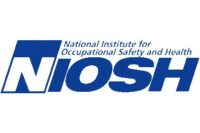Declaring the risks of contracting permanent or deadly lung disease “serious,” the CDC recently finalized a warning to employers and workers in the coffee, popcorn and other food and beverage businesses: Beware of diacetyl.
NIOSH found that a relationship exists between diacetyl exposures and lower pulmonary function. Utilizing this analysis, NIOSH recommends keeping exposure to diacetyl below a concentration of 5 parts per billion as a time-weighted average during a 40-hour work week. To further protect against effects of short-term exposures, NIOSH recommends a short-term exposure limit for diacetyl of 25 parts per billion for a 15-minute time period.
In many operations, 2,3-pentanedione is being used to substitute for diacetyl. Published toxicological studies indicate that 2,3-pentanedione exposure can cause damage similar to that caused by diacetyl in laboratory studies. NIOSH recommends keeping occupational exposure to 2,3-pentanedione below a level comparable to the level recommended for diacetyl. However, the recommended sampling and analytical method can only reliably quantify it to 9.3 parts per billion in an 8-hour sample. NIOSH also recommends a short-term exposure limit for 2,3-pentanedione of 31 parts per billion during a 15-minute period
“Employers need to understand what steps can be taken to protect the health of their workers,” said Christina Spring, spokeswoman for NIOSH, the research arm of the U.S. Centers for Disease Control and Prevention.
NIOSH couldn’t say how many workers might be exposed to diacetyl nationwide, but numbers from the U.S. Bureau of Labor Statistics show as many as 600,000 people work in the coffee industry.
Diacetyl occurs naturally in coffee roasting and is released in higher concentrations when the beans are ground or storage bins are opened. It’s also produced synthetically and added to all kinds of foods and drinks to impart a buttery, creamy flavor.
The FDA has deemed diacetyl safe to consume in trace amounts, but inhaling it has proven deadly.
Diacetyl attacks and inflames the lung’s smallest airways, leading to scar tissue build-up that blocks airflow. The damage is permanent. Exposure can also cause eye and skin irritation and other respiratory illness.
In the early and mid-2000s, scientists linked diacetyl to several deaths and hundreds of injuries to workers in microwave popcorn factories in Missouri, California, Illinois and elsewhere. Dozens of public health experts at the time petitioned OSHA to step in and issue regulations, noting “compelling epidemiologic and toxicological evidence linking exposure to diacetyl to severe respiratory impairment and disease.”
Diacetyl and its substitute, 2,3-pentanedione, are widely used flavoring compounds. There have been extensive reports of serious respiratory disease and decreased lung function in employees exposed to diacetyl.
NIOSH’s objective in establishing recommended exposure limits (RELs) for diacetyl and 2,3-pentanedione is to reduce the risk of respiratory impairment (decreased lung function) and the severe irreversible lung disease obliterative bronchiolitis associated with occupational exposure to these compounds.
Plus, maintaining exposures below the RELs will help prevent other adverse health effects including but not limited to irritation of the skin, eyes, and respiratory tract in exposed employees.
The recommendation to limit exposure to diacetyl and 2,3-pentanedi-one is based upon data from human and animal studies and the quantitative risk assessment; however, additional considerations include sampling and analytical feasibility and the achievability of engineering controls.
Source: NIOSH



